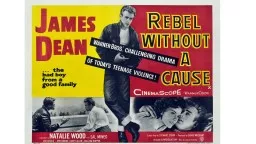PPT-Rebel Without A Cause Bell Ringer
Author : myesha-ticknor | Published Date : 2018-02-27
What is it that tends to generate rebelliousness in teenagers When does it become a problem How should it be handled Why is it that some arent tempted to rebel Why
Presentation Embed Code
Download Presentation
Download Presentation The PPT/PDF document "Rebel Without A Cause Bell Ringer" is the property of its rightful owner. Permission is granted to download and print the materials on this website for personal, non-commercial use only, and to display it on your personal computer provided you do not modify the materials and that you retain all copyright notices contained in the materials. By downloading content from our website, you accept the terms of this agreement.
Rebel Without A Cause Bell Ringer: Transcript
Download Rules Of Document
"Rebel Without A Cause Bell Ringer"The content belongs to its owner. You may download and print it for personal use, without modification, and keep all copyright notices. By downloading, you agree to these terms.
Related Documents














